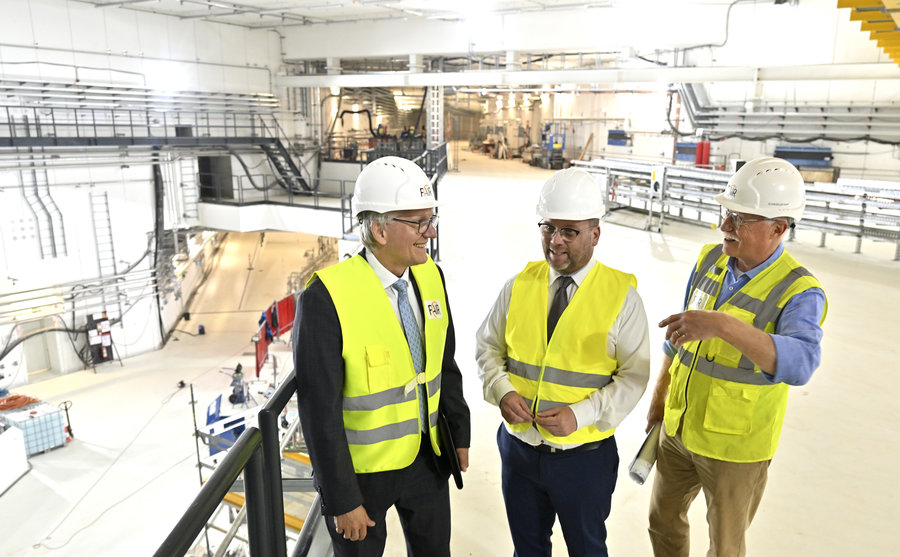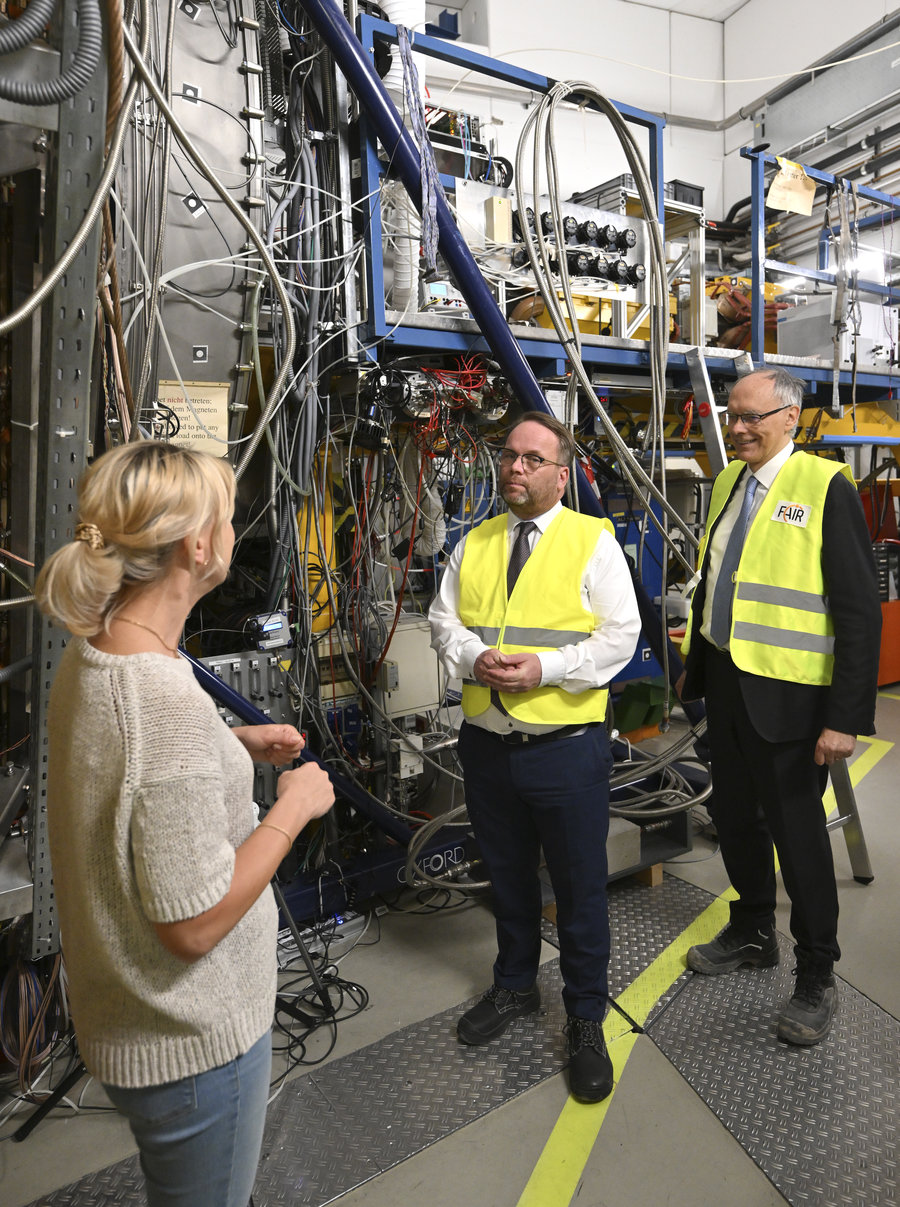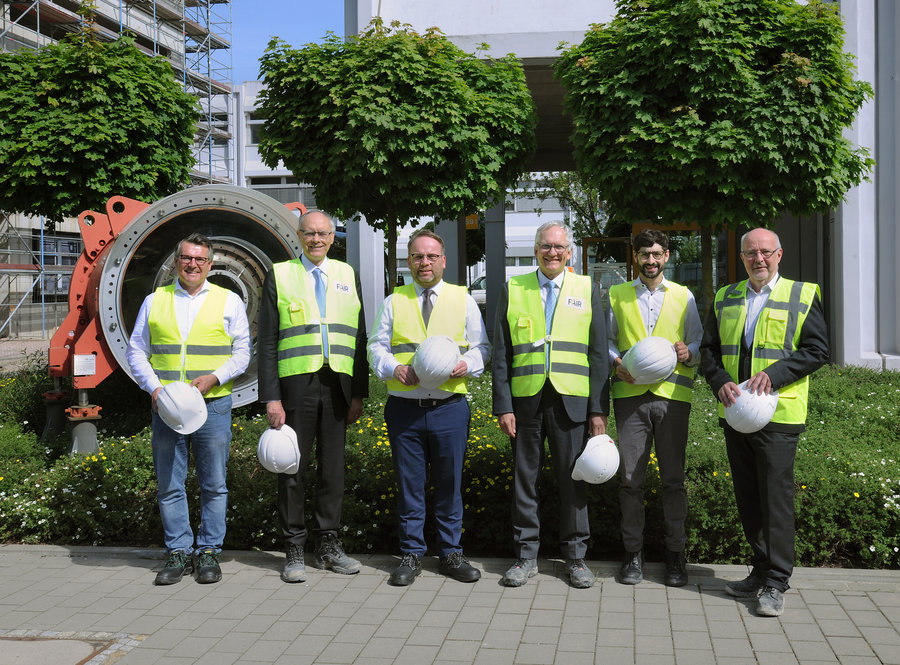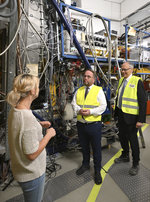Insight into cutting-edge research and future prospects: Hessian Science Minister Timon Gremmels visits GSI and FAIR
18.06.2024 |
The Hessian Minister for Science and Research, Art and Culture, Timon Gremmels, recently visited the GSI Helmholtzzentrum für Schwerionenforschung and the international accelerator center FAIR (Facility for Antiproton and Ion Research in Europe). Accompanied by members of the state parliament Peter Franz and Bijan Kaffenberger he was given a comprehensive insight into the scientific and technical prospects of GSI and FAIR for the coming years.
He was welcomed by the management of GSI and FAIR: Professor Paolo Giubellino, Scientific Managing Director, Jörg Blaurock, Technical Managing Director, and Markus Jaeger, Deputy Administrative Managing Director, as well as press spokesman Dr. Ingo Peter. Minister Gremmels was impressed: “It is fascinating to see how cutting-edge research is being carried out here and how the international accelerator center FAIR is taking shape.”
FAIR not only promises pioneering scientific findings, but is also a magnet for highly qualified specialists. Minister Gremmels emphasized the importance of GSI and FAIR for Hessen: “GSI/FAIR are not only international flagships for research, but also make a decisive contribution to strengthening Hessen as a top location for research and innovation.”
FAIR will be able to produce and study extreme states of matter in the laboratory, which otherwise only occur in neutron stars, supernovae, stars or large gas planets. During the tour of the construction site, the guests were able to see the different construction phases up close. The program included the underground accelerator ring tunnel SIS100, the central beamline and transfer building and the buildings for the FAIR experimental sites. They were impressed by the first accelerator components that have already been installed in the tunnel and by the prospects that are opening up as the FAIR project progresses.
On the GSI and FAIR campus, the guests were able to get an idea of the scientific successes. They visited the HADES (High-Acceptance Di-Electron Spectrometer) detector, which is used to study high-energy nuclear-nuclear collisions and enables a better understanding of the properties of hot, highly compressed nuclear matter, such as that produced in the universe when neutron stars collide. They also visited the PHELIX (Petawatt High-Energy Laser for Ion Experiments) laser facility, which is one of the most powerful lasers in the world. One potential application of PHELIX is to optimize the conditions for a more stable interaction between laser and plasma, as required for the realization of inertial confinement fusion.



















